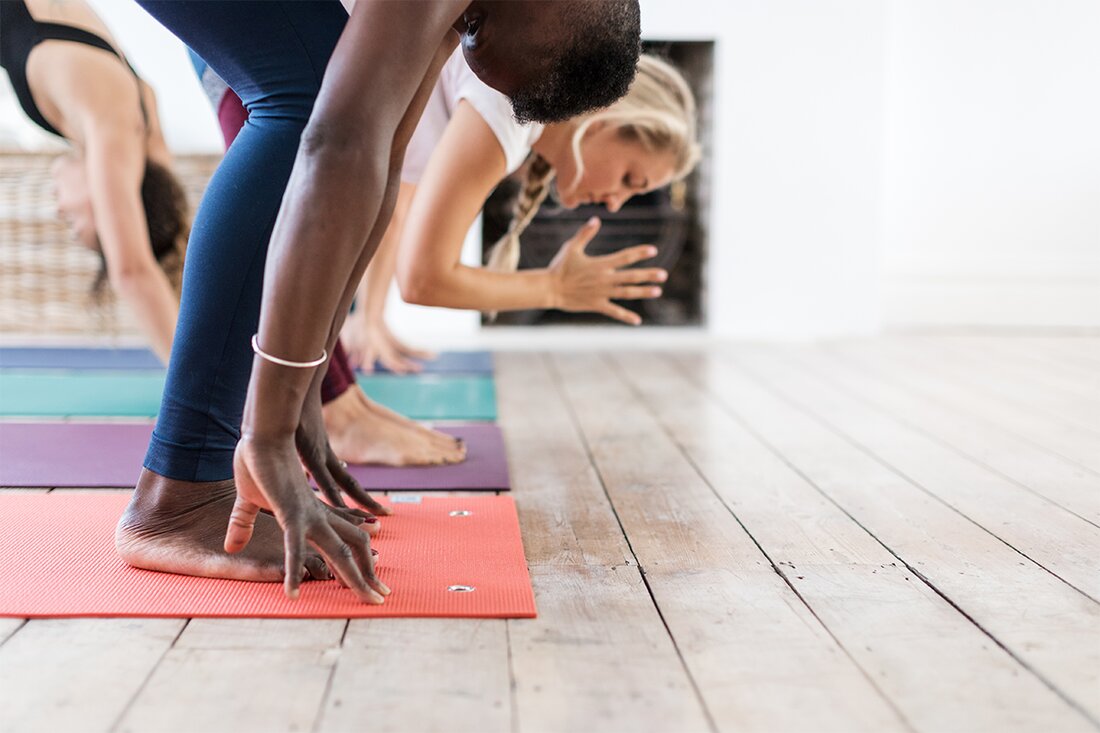4 Animal-Inspired Yoga Poses and Their Meanings
Sometimes we need a reminder that as humans we are animals too! We have always lived alongside birds and bees and have even lived with animals such as dogs and cats as companions for thousands of years. While Native American communities revere spirit animals as guides, the ancient Egyptians believed cats were magical and brought good luck to owners. In India, cows are considered sacred, and there are many texts dealing with animal worship (or zoolatry), suggesting that primitive man's infatuation with the animal kingdom arose from a curiosity about animals that had imitable characteristics. In the …

4 Animal-Inspired Yoga Poses and Their Meanings
Sometimes we need a reminder that as humans we are animals too! We have always lived alongside birds and bees and have even lived with animals such as dogs and cats as companions for thousands of years. While Native American communities revere spirit animals as guides, the ancient Egyptians believed cats were magical and brought good luck to owners. In India, cows are considered sacred, and there are many texts dealing with animal worship (or zoolatry), suggesting that primitive man's infatuation with the animal kingdom arose from a curiosity about animals that had imitable characteristics.
In the yoga world, we can see how animals have provided inspiration in the form of Adho Mukha Svanasana (Downward-Facing Dog), Kurmasana (Turtle Pose), and Garudasana (Eagle Pose). Religions that have influenced yoga, such as Hinduism, Buddhism, and Jainism, all use animals symbolically, and ancient stones and artifacts discovered in the Indus Valley show carvings and depictions of rhinos, elephants, and bulls. One of the most controversial and important recovered stones associated with the beginnings of yoga itself even depicts what scholars and historians have called the "Lord of the Beasts" - also considered by many to be the god Shiva.
Whether you've researched the origins of yoga and its mysterious history or simply enjoy the practice for its physical and mental benefits, we can still deepen our understanding of yoga by learning more about the postures. For many animal-inspired yoga poses, the original intent was not just to "do" the form, but to embody the characteristics and energy of the animal itself. Read on to get inspiration on how to embody four important animal asanas in your practice!
Adho Mukha Svanasana
Downward facing dog pose
Although this specific pose does not appear in ancient Hatha Yoga texts, there is an almost identical asana called Gajasana (Elephant Pose), and this pose is recommended to be repeated "over and over again" in Sritattvanidhi, 19thCentury Mysore Palace Script (in case you're wondering why it appears so often in Ashtanga or Vinyasa Flow Style classes!) When we practice Downward Facing Dog, we are reminded of how humans evolved from animals that walked on all fours. and studies show that when we use our hands and knees or even “crawl,” we reconnect with our original primitive strength. This type of position also has mental benefits as it strengthens neural connections and improves brain communication between the left and right hemispheres, making our reflexes more efficient and improving our overall ability to move. Knowing all this, perhaps we could schedule our time in a downward dog to let go of the overthinking, technology-driven, stressed-out human life and spend some time in the mindset of the always curious, playful, non-expectant and of course strong dog.
Kurmasana
Turtle pose
BKS Iyengar explained that this pose is dedicated to Kurma, the tortoise incarnation of Vishnu, and that there are many variations, ranging from simple and accessible to complex, requiring a lot of flexibility in the hamstrings, hips, spine and shoulders. Regardless of which variation of the asana you choose, you can deepen your experience and awareness by embodying the qualities of the turtle itself. In many cultures, the turtle represents deep wisdom and knowledge, patience and longevity and is also the personification of immortality, fertility, the moon and earth. What's important today is that we can use this posture to tune into stillness, remember the benefits of slower living, and take time to absorb what we learn and experience, transforming it into wisdom. Kurmasana The pose itself can be a place to turn inward and practice pratyahara, or “sensory deprivation.” Practiced regularly can connect us to a sense of introspection and calm, which the turtle represents in many religions.
 Garudasana
Garudasana
Eagle pose
The swift, sharp, and predatory eagle is often depicted in Native American culture as a symbol of strength, leadership, and vision. Spiritually it represents a connection to divinity as the eagle flies higher than other birds. If you've ever practiced Garudasana, you know how much focus and strength the pose requires to maintain for long periods of time. This encourages us to stay focused and cultivate Eka Graha or “One-Pointed Focus” when we need it in life. Eagles can also remind us to look at situations from a different or “higher” perspective and know that in any circumstance, you have the potential to rise and fly higher than you may think!
Simhasana
Lion pose
The symbology of the lion represents majesty, strength, courage and pride, and sometimes we all need a little lion energy! Simhasana involves kneeling with your mouth wide open and your tongue out, letting out a big, confident “ahhhhhhh.” When we open our mouth and make this sound, we not only release physical tension from the face, but we also release emotional tension. To be our strongest and bravest self, it is useful to let go of things that hold us back, such as self-consciousness, worry or fear, and practicing this asana with sound and breath is a wonderful way to remind ourselves how powerful we really are! In terms of the chakras, Simhasana helps release blocked energy around the throat chakra and encourages us to speak freely, express our opinions and occasionally shout!
Written by Yogamatters

 Suche
Suche
 Mein Konto
Mein Konto



